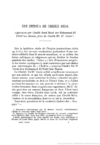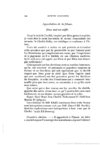Collaboration, Modernity and Colonial Rule: Sidiyya Baba and Mauritania
By David Robinson
A Model Spokesman for Collaborating with a European Power
In January 1903, just as the "pacification" plan of Coppolani was about to be launched, Sidiyya Baba composed and circulated a fatwa of immense utility to the French cause. Drawing on the jurist Khalil ibn Ishaq and other sources with impeccable credentials, and noting that the Muslims of the eastern Maghrib were already living under French rule, Baba declared that the military jihad of resistance would only bring exhaustion to Muslim societies. It was especially to be rejected when Muslims were in a situation of weakness:
It is evident that the obligation [to wage] holy war disappears in the face of the inability to accomplish it.... The inability of this land [of Muslims] to fight against the force of the Christians is obvious. Any sane man who hears and sees is aware of the absence of unity among Muslims, the absence of a public treasury necessary for any action, and the inferiority of their weapons in comparison to those of the Christians.... [There is also no obligation] to emigrate, en masse or in part, from the territory conquered by the "infidel", because of poverty as well as the absence of destinations where the necessary security and resources exist.
Baba did not stop there. He noted that the French had demonstrated that they would not interfere with the practice of the faith; indeed, that they would give positive support to the institutions of worship, education and law. Their rule promised an end to the conditions of anarchy, fitna, which had plagued the societies of northwest Africa, and the beginning of conditions of peace and stability which would enable Islam to consolidate its position:
It must be said, in addition, that the conduct of the Christians...[is what is required by Islam]. They not only do not oppose the exercise of religion, they also provide positive support in the construction of mosques, appointment of qadis and provision of a good organizational structure.
An organizational structure, indeed, in which Islam and islamization would thrive. In other words, and in language that was often used as the Europeans conquered areas where Islam was strong, the French were a good "Muslim power." The fatwa was endorsed by Shaikh Saad Buh, another bidan marabout who had been an ally of the French for a much longer time; Saad Buh was useful to the French because he was recognized as a sharif, a descendant of the Prophet, and he was the brother of Ma El Ainin, the “hero of resistance" to French control and a close confidante of the court of the Sultan of Morocco.
Saad Buh accompanied Baba and Coppolani. He had worked with the French for two decades, and had an important following in southern Mauritania and Senegal, but his participation in the campaign was less important. In addition, he had grave reservations about the whole enterprise of taking over bidan society. Saad Buh gave his approval to Baba's document and the French published it with the fatwa of Baba. (Both documents can be accessed through the sidebar. They were published togher, with an introduction and in French, in "Archives Marocaines" for 1907. I have not found the Arabic originals.)
Baba and Coppolani worked in harmony as the architects of the "pacification", which relied on the zwaya rather than the older French pattern of working with the warrior classes. The campaign had some success until Coppolani's assassination in May 1905. Three years later Baba established a new pact with the man who completed the capture of southern and central Mauritania, Henri Gouraud. In this second phase the French dropped the expression “pacification” and adopted the language of conquest.



 Images
Images Documents
Documents


